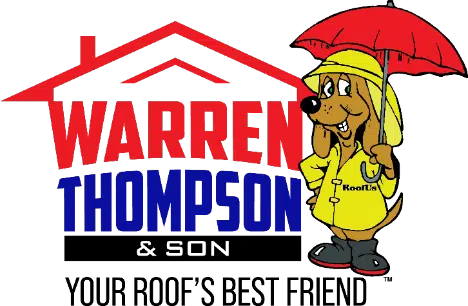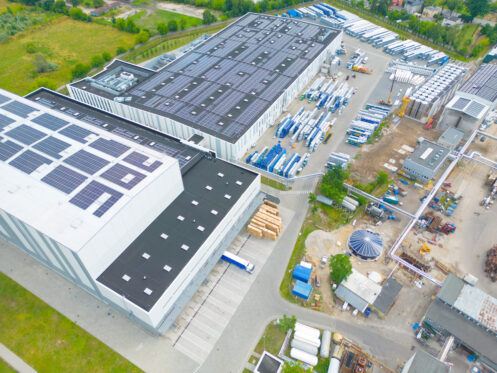If you own a commercial building in Alpha, NJ that needs a new roof, choosing the right kind isn’t easy. There are multiple materials to select from, and they have different advantages and disadvantages. For example, if your building has a flat roof, you’re likely considering a single-ply roofing solution. In that category, you can opt for polyvinyl chloride (PVC), thermoplastic polyolefin (TPO), or ethylene propylene diene monomer (EPDM). PVC is the most popular, with TPO not far behind. However, EPDM is also widely used throughout the U.S.. Here’s everything you need to know about EPDM and its advantages as a commercial roofing material.
What Is EPDM?
Although you may not know what ethylene propylene diene monomer is, you may recognize it by another name. It’s often referred to as rubber roofing. That’s because EPDM is a type of synthetic rubber. It was an invention of the DuPont corporation in the 1950s. However, Carlisle SynTec was the first roofing company to use it as a roofing material beginning in the 1960s.
Generally, EPDM comes in rolls ranging from 7.5 to 50 feet in width. It is also available in multiple thicknesses ranging from 45 to 90 mil. That makes it a flexible roofing solution for buildings of all sizes. EPDM roofing membrane is multi-layered, but the actual EPDM is only the material’s base. On top of that, you’ll find a fire-retardant layer and a polyester-reinforced top layer for extra durability. Some variants include an additional white top layer to help reflect sunlight and improve building energy efficiency.
The Advantages of EPDM
It’s no accident that EPDM roofing has been on the market for as long as it has. It’s a material with a variety of advantages that commercial building owners love. Here are some of them.
Low Installation Costs
EPDM is typically the lowest-cost option of the three primary commercial flat roofing materials available. The material itself costs approximately 80¢ per square foot. Of course, that price will vary based on manufacturer and finish options. It’s also the flat roofing material with the lowest installation labor costs. It’s easy to work with and quick to install, which cuts total labor time and saves you money.
Long Life span
An EPDM roof should last at least 20 to 30 years with proper care. That gives it one of the highest price-to-durability ratios of any commercial roofing material. Part of that is due to the material’s strength. But another part is that it comes in large sheets, which minimizes seams, leaving fewer vulnerabilities.
High Energy Efficiency
Another advantage of EPDM as a roofing material is its thermal characteristics. It is an excellent insulator, helping keep conditioned air inside your building. It also blocks plenty of heat gain from the sun, especially if you choose a variant with a white top layer.
Excellent Weather Resistance
Standing up to the punishment of the elements is another job that EPDM roofs excel at. As a synthetic rubber, EPDM is naturally waterproof. It also resists impact damage from hail and fallen tree limbs. Black variants also help melt snow accumulations quickly, reducing stress on your roof structure.
Excellent Ozone Resistance
Degradation from ozone exposure is another thing that commercial roofs must defend against. EPDM is highly resistant to ozone degradation. That means an EPDM roof should show minimal signs of oxidation, even after years of environmental exposure.
Excellent Wind Resistance
Wind is another environmental hazard that can damage or destroy a commercial roof. EPDM is extremely wind resistant, owing to its large continuous sheets and sealed seams. EPDM roofs have few exposed edges, so there’s nowhere for wind to penetrate and lift.
Excellent Fire Resistance
EPDM roofing materials offer excellent fire resistance due to their included fire-retardant layer. They’re difficult to impossible to ignite. In the rare cases when ignition occurs, the material will considerably slow the spread of fire. That helps them protect their underlying structure and can keep a fire from spreading to neighboring structures.
Works Well in All Climates
Here in the Northeast, we experience true four-season weather and everything that comes with it. That means commercial building roofs here must deal with sub-freezing winter temperatures. Then, they’ll experience multiple days in the high 80s and low 90s during the summer. Fortunately, EPDM has a wide range of safe operating temperatures. It can withstand temperatures as low as -40 degrees Fahrenheit and as high as 300 degrees Fahrenheit.
End-of-Life Recyclability
No matter how long your commercial roof lasts, it will eventually need replacement. When that day comes, you can take comfort in knowing that EPDM roofing materials are recyclable. The EPDM Roofing Association (ERA) runs a recycling program in concert with major manufacturers. The program returns discarded EPDM to factories for reprocessing into other products, including flooring.
EPDM Roofing Installation Options
It’s also worth noting that there are three ways to install EPDM roofing materials. One of the methods involves using adhesive to secure the material to your roof substrate. Some EPDM manufacturers make product versions with adhesive backing, further simplifying installation. Using an adhesive for installation also results in the highest wind resistance of all three methods. It also results in the most energy-efficient roof performance. However, adhesive installation is the most time-consuming of the installation methods.
It’s also possible to install EPDM roofing using mechanical fasteners. The process begins with insulation sheets held down by insulation plates and fasteners with sealing washers. Then, the EPDM gets layered over the insulation with another round of seam plates and specialized fasteners. Mechanically-fastened EPDM roofs are a method of choice for re-roofing projects due to their flexibility. Their primary drawback is that they feature reduced wind resistance. Additionally, the fasteners can act as thermal bridges, reducing the insulating effects of the EPDM.
Finally, one of the oldest EPDM roofing methods involves using a ballast layer. Generally, whenever you see a flat roof with stone or paver overlays, it’s a ballasted EPDM roof. It is one of the oldest single-ply roof installation techniques. The biggest drawback to the process is the added weight. Some buildings would need structural reinforcement to support the ballast. However, a ballasted EPDM roof can be the most cost-effective installation option where applicable. Plus, the work can proceed in almost any weather since it’s not affected by temperature.
Your Reliable EPDM Roofing Installer
Warren Thompson & Son Roofing & Siding has remained a leading roofing provider in Alpha since opening in 1973. We offer complete commercial and residential roofing services, including installation, repair, and maintenance. We also provide Roof Maxx treatments, which can substantially increase the life span of residential roofs. Our roofers have decades of experience and undergo continual training. We have GAF Master Elite Certification, so you know we use quality roofing materials, and we comprehend how to work with them. We also have Better Business Bureau accreditation and maintain an A+ rating. We even offer multiple money-saving specials and financing on approved credit. So, if you’re interested in an EPDM roof for your commercial building in Alpha, call Warren Thompson & Son Roofing & Siding today!

